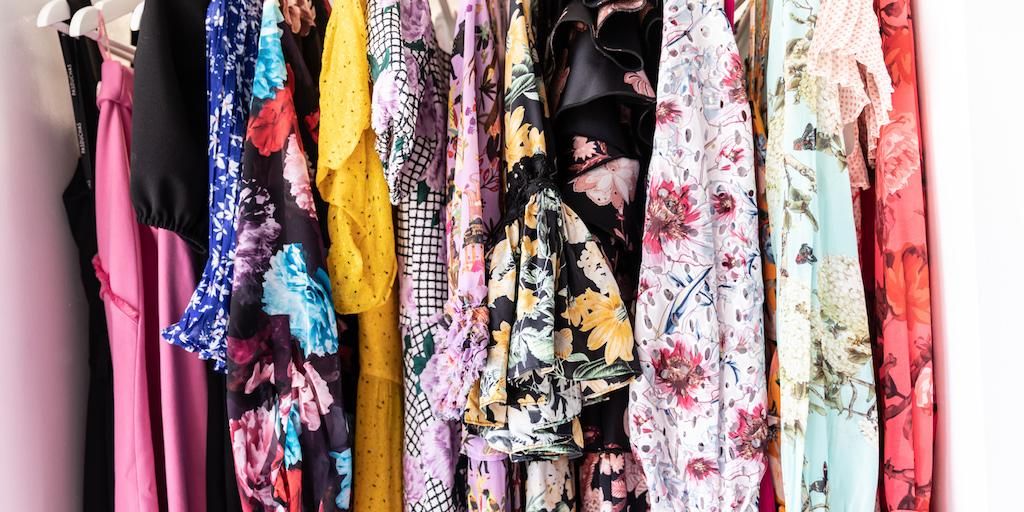At GlamCorner, we’re dedicated to combating the growing problem of fashion waste in Australia. That’s why we’re delighted to announce our partnership with Moving The Needle. Why are we so passionate about our involvement with Moving The Needle? To fully explain, we need to take a closer look at fashion waste and why it’s such a huge issue for Australia and the rest of the world.
Why Is Fashion Waste a Problem?
In this era of mass-produced, cheap clothing, it’s common for consumers to buy something, wear it a few times (or not at all!) and then throw it away. As a result, Australians are now sending six tonnes of clothing to landfill every ten minutes1.
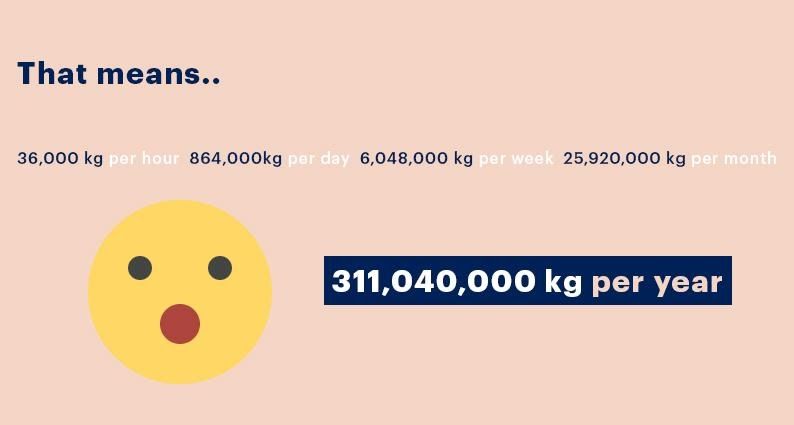
This statistic is particularly alarming when you consider that 60% of the fibres used in textiles come from petrochemicals2.
In Australia, we are the second-highest consumers of textiles per capita in the world4, which is twice the global average and only exceeded by the United States. If you fit the profile of an average Australian woman, then you are likely to throw away around 23kg of clothing every year.
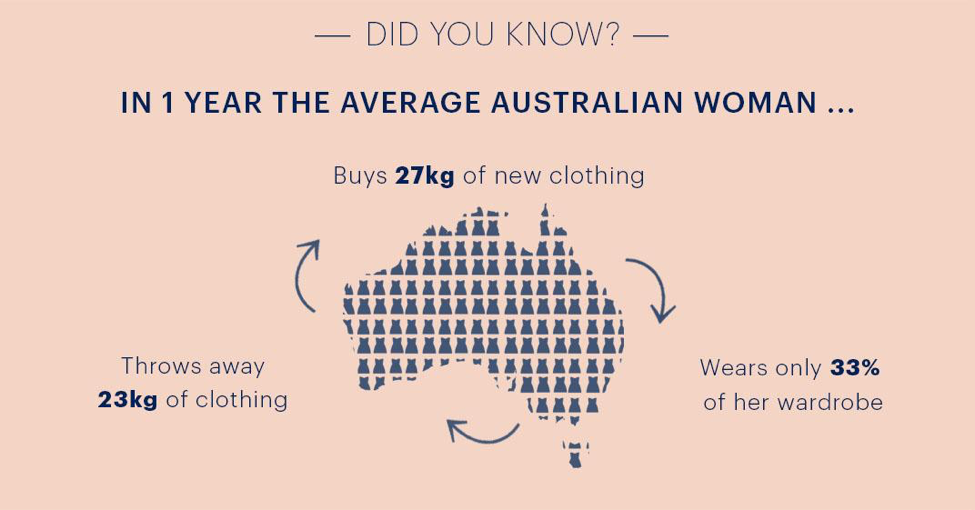
How is the Textile Industry Damaging the Environment?
It’s not just the huge amount of discarded clothing that is an ever-increasing environmental problem – the creation of more and more “fast fashion” items also has a massive impact. Globally, the textile industry, including its energy-intensive processes and long supply chains, is responsible for an estimated 10% of all the greenhouse gas emissions contributing to climate change3. That’s more than the shipping and aviation industries combined.
Water usage and pollution: The textile industry is the third-largest consumer of water in the world, behind the paper and oil industries. Water is used in virtually every step of the production process, from growing cotton plants and manufacturing human-made textiles, to dyeing fabrics and washing finished garments. It can take 2,700 litres of water to produce the cotton needed to make a single top5 – that’s more water than one person can consume in three years!
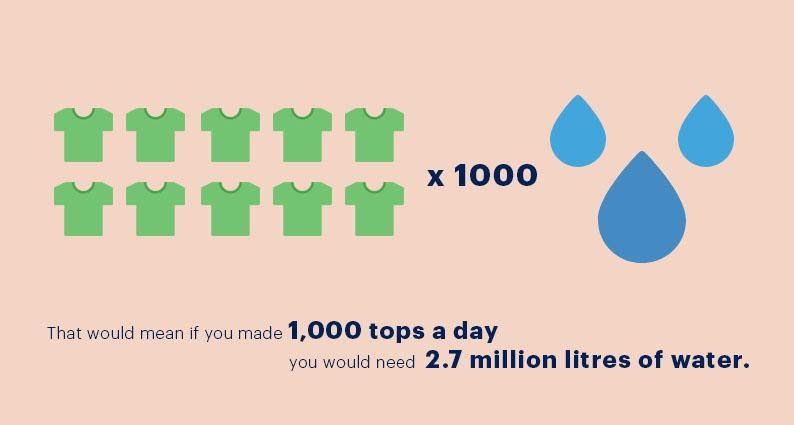
Furthermore, much of the water used in the manufacture of textiles becomes contaminated during the sizing, mercerising, bleaching, dying and printing processes, leading to a mixture of dyes, starches, detergents, salts, toxic organic chemicals, biocides and ionic metals being discharged into lakes and rivers6. It’s estimated that 17-20% of all industrial water pollution comes from dyeing and treating textiles7.
A gigantic carbon footprint: Not only does fabric use an enormous amount of water during production, but it also requires a massive amount of energy to power all the machinery involved. The estimated annual global production of 60 billion kilograms of fabric uses 1,074 billion kWh of electricity, which requires 132 million metric tonnes of coal to generate8. Coal-fired power plants are significant producers of carbon dioxide, a major greenhouse gas.
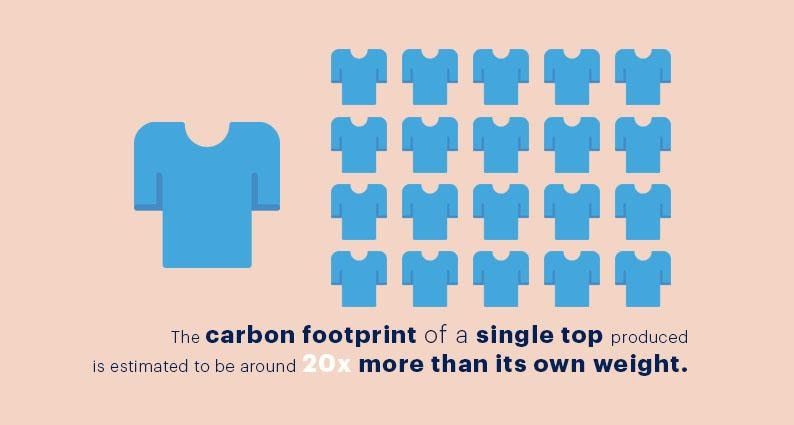
Let’s go back to all that fabric sitting in landfill. As it decomposes, it releases methane, a powerful greenhouse gas with a global warming potential 104 times greater than carbon dioxide over a 20-year period9. Dyes and other chemicals in the fabric can leach into the soil and groundwater, posing a health risk to both humans and wildlife10. Synthetic fabrics, which are designed not to decompose, may take hundreds of years to break down.
All of this sounds pretty dire – but the great news is that we can do something about it! The answer to stemming the tide of fashion waste is to reduce the demand for “fast fashion” and reduce the number of garments we throw away.
How is Moving The Needle Tackling Fashion Waste?
Moving The Needle’s goal is to reduce the amount of fashion waste by 20% by the year 2022. To do this, they are collaborating with companies like GlamCorner and charities like The Australian Red Cross and The Salvation Army to provide an easy way for Australian consumers to recycle their unwanted clothing.
Once received by Moving the Needle, they will redistribute the clothing to their charity partners who sort through everything. Great quality clothing is sold through the charity partners’ stores around Australia, raising money for social programmes. Non-resellable clothing goes to organisations who will turn it into rags or fuel blocks. Or otherwise, send it overseas to countries who need second-hand clothing.
By doing this, Moving The Needle is helping to ensure that each piece of donated clothing continues to live a full life and doesn’t contribute to the growing fashion waste problem.
How Can You Get Involved?
It’s simple.
- Find the pre-loved clothing and accessories you no longer want or need (making sure to check they can be loved again by someone else)
- Place them inside the prepaid return satchel we’ve provided with your rental order
- Post your satchel
- Share your involvement on social media by tagging @glamcornerau and using #movingtheneedle
By giving your pre-loved clothes a new life you can help charity partners to raise money to help those in need. Moving the Needle is helping to ensure that each piece of donated clothing continues to live a useful life and doesn’t contribute to the growing fashion waste epidemic.
If you have a lot of clothing to recycle and it doesn’t fit in your return satchel, alternatively, there are plenty of places where you can make larger donations. Check the Moving The Needle website to find the location of your nearest donation box.
We’re so excited about this opportunity to help reduce your fashion waste, declutter your wardrobe and help people in need. When you donate your clothes, spread the good word on social media by tagging us at @glamcornerau and using #movingtheneedle. Get your friends involved in this worthy cause!

References:
- https://movingtheneedle.com.au/
- https://www.sciencedirect.com/science/article/pii/S0959652618305985
- https://www.unece.org/info/media/presscurrent-press-h/forestry-and-timber/2018/un-alliance-aims-to-put-fashion-on-path-to-sustainability/doc.html
- http://www.afr.com/lifestyle/fashion/why-the-fashion-industry-is-out-of-control-20160419-goa5ic
- https://www.worldwildlife.org/stories/the-impact-of-a-cotton-t-shirt
- https://www.oemupdate.com/industry-update/controlling-pollution-in-textile-industry/
- https://www.worldbank.org.au/
- https://oecotextiles.wordpress.com/2009/05/25/carbon-footprint-of-the-textile-industry/
- https://en.wikipedia.org/wiki/Atmospheric_methane
- https://www.huffpost.com/entry/why-ban-textiles-from-lan_b_1308038
.png)
